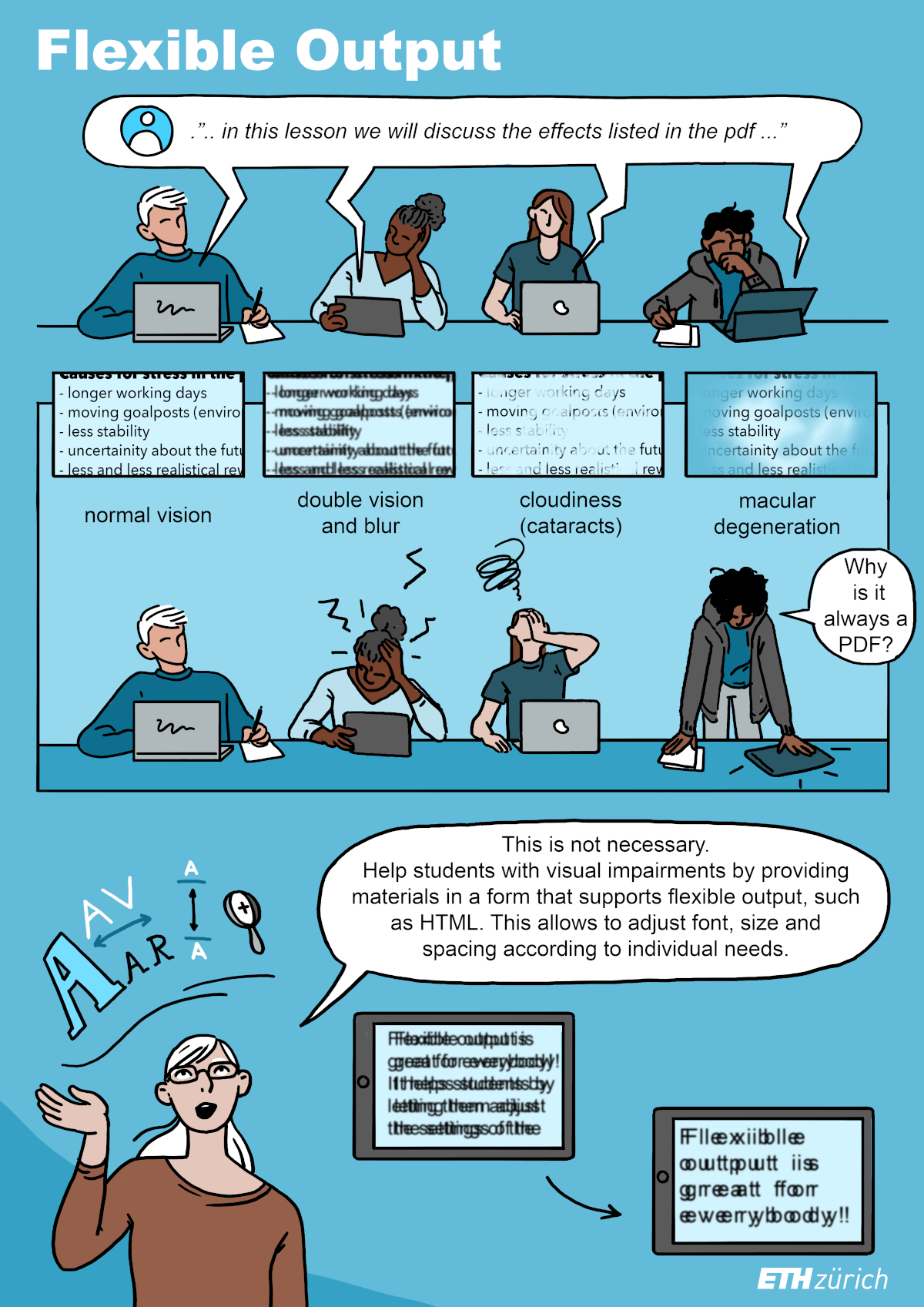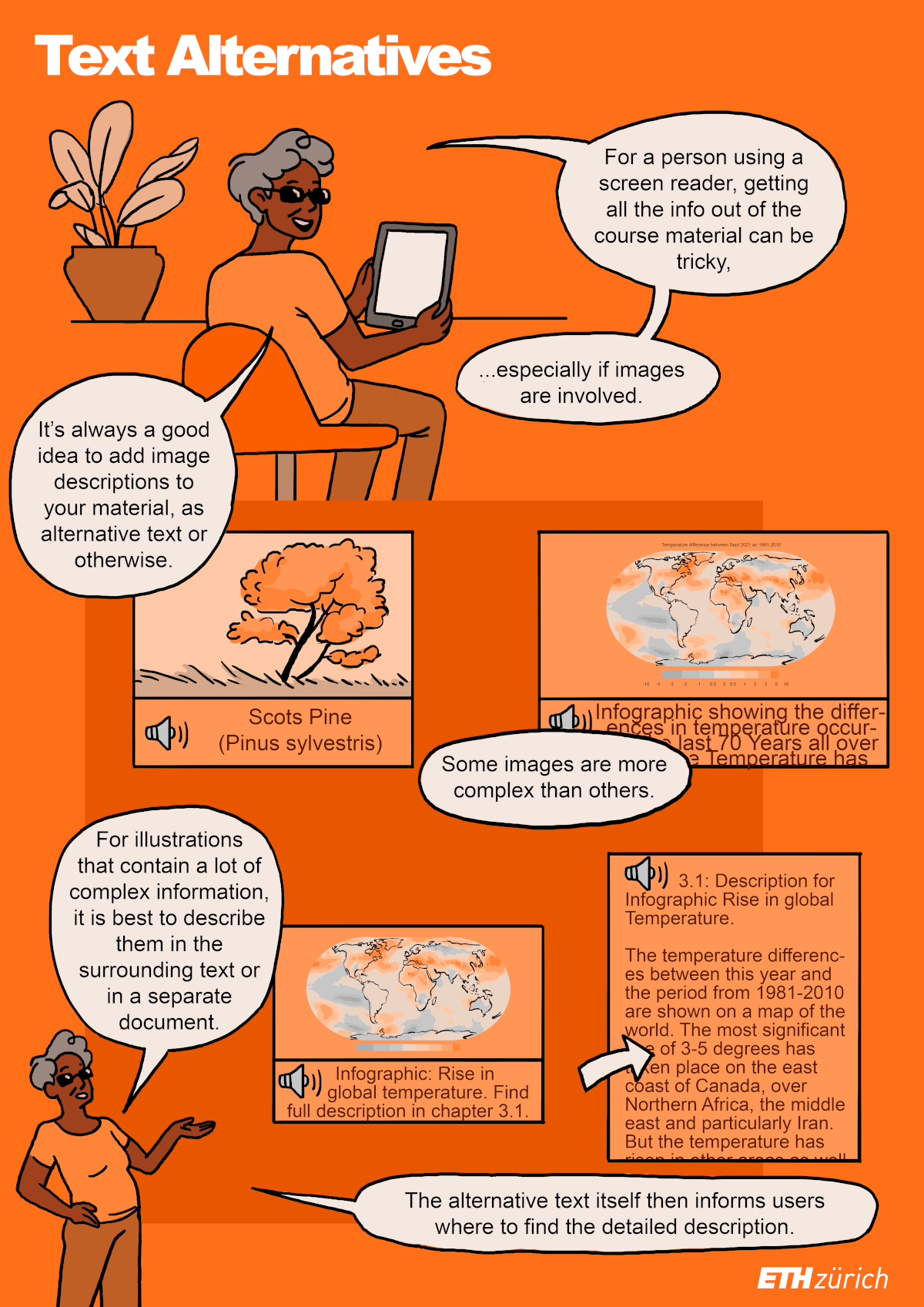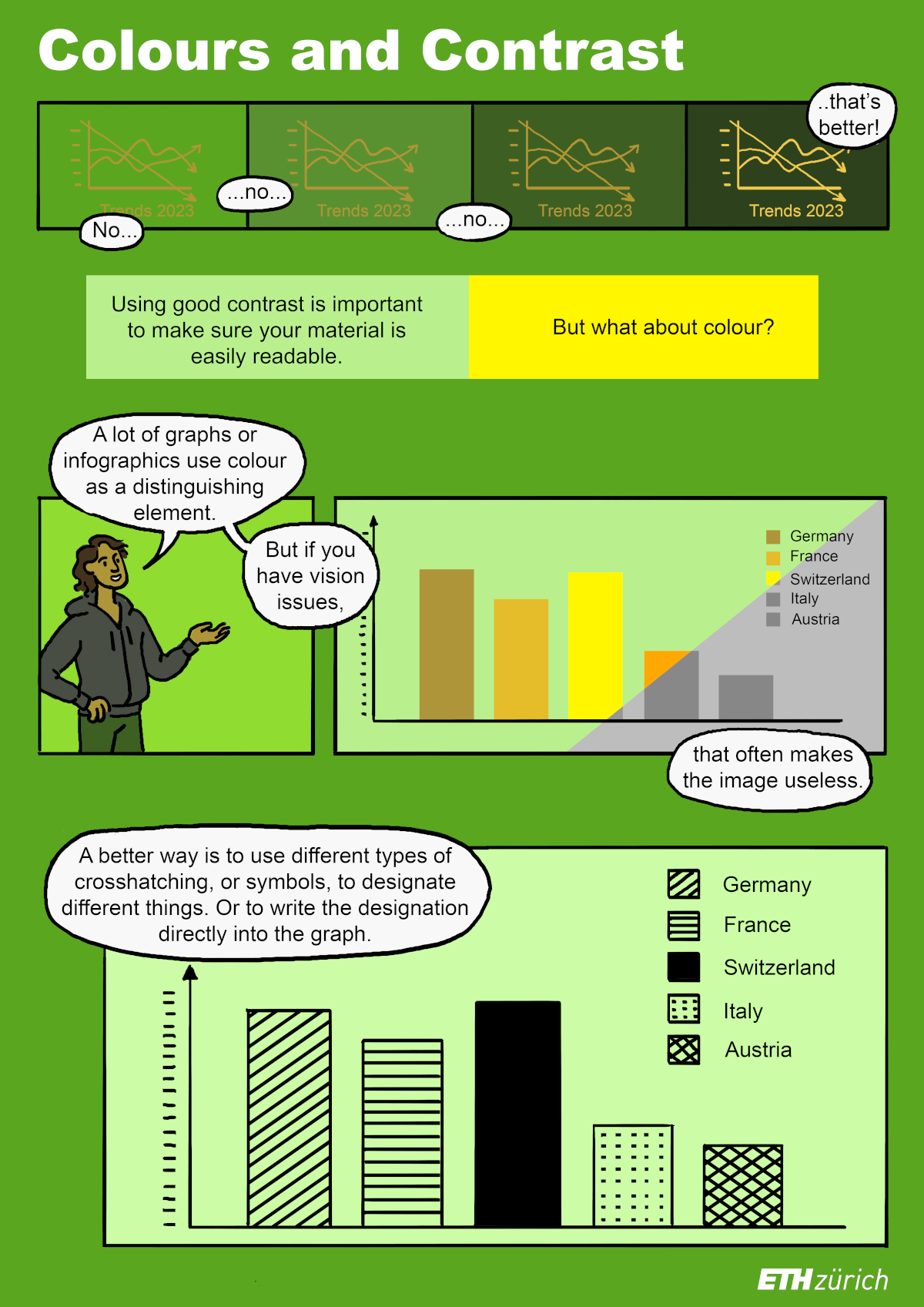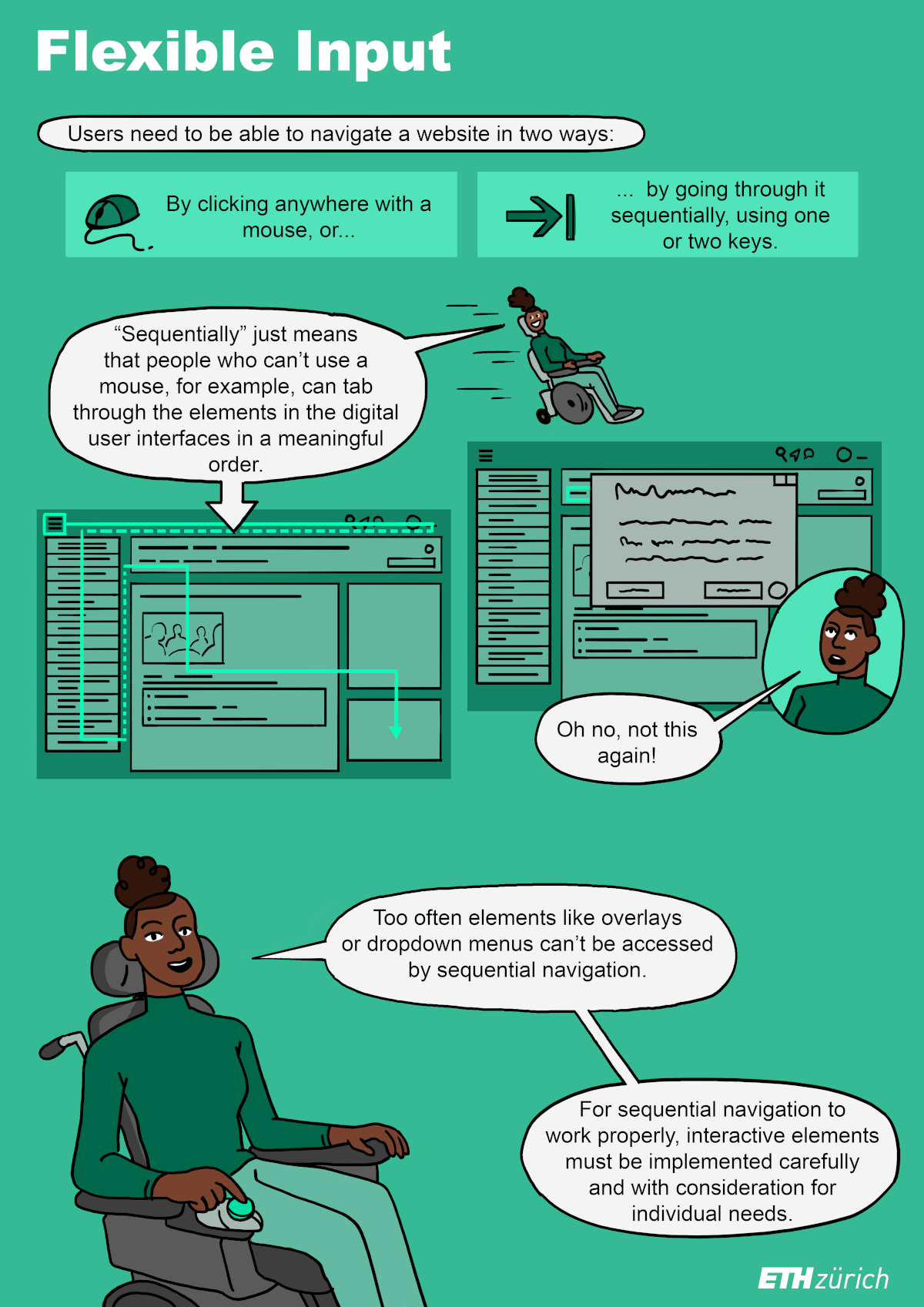Comics - Accessibility in Education

Comic illustration on flexible output: People with sensory disabilities, especially people with various visual impairments, depend on the ability to adjust the content on the monitor according to their individual needs: font enlargement, adjustment of font and background colours, line height and letter spacing, and much more. All this can be done much more easily with classic web technologies than, for example, in PDF format. Keyword Responsive Design.

Comic illustration on text alternatives in digital learning content: Visual representations of facts, contexts and processes are more and more common in teaching. For blind people or people with severe visual impairments, it is important that all information is also available as text. When using visual material, authors should therefore always think carefully about what central information they want to convey and provide this information in text form.

Comic illustration about colours and contrast: Various visual impairments result in limitations in the perception of colours and contrast. It is therefore important to ensure that texts and graphics always have high contrast values between foreground and background colours. It is also important to prevent information from being conveyed by colour alone, for example by means of colour-coded legends in graphs. Alternatives here are symbols, hatching or simply direct labelling of the respective data.

Comic illustration on audio description: Everyone benefits from the visualisation of complex issues through images, videos, animations or simulations. In lectures as well as in videos. For people with visual impairments, however, it is indispensable that the scenes and visual content presented are always commented on and adequately described in spoken language. Where this is not possible, additional audio tracks with audio descriptions become necessary.

Comic illustration flexible input: Digital media can be operated in different ways. We all know computer mice or touch screens. For people who cannot operate these devices or can only do so with difficulty, it is important that they can also access and exit all interactive elements serially, e.g. with the tab key on the keyboard. For them it is important that the individual elements are arranged in a predictable sequence and that it is always visible where the focus is at the moment.

Comic illustration heading structures in digital learning content. Headings and their structure (hierarchical heading levels) are important for people who use assistive technologies to orientate themselves in digital content and to find relevant content quickly and efficiently. Screen readers, software that converts written content in synthetic spoken language or Braille, allow blind people to jump directly to headings of interest and quickly get an overview of the content. Therefore, use format templates for headings and ensure a hierarchically correct structure.

Comic illustration video captions: People with hearing disabilities depend on audio and video content always being available as text, too. Learning videos and lecture recordings should therefore always be provided with captions. Fortunately, the quality of automatically generated subtitles is improving. Despite this progress, subtitles must be checked for quality and corrected accordingly.